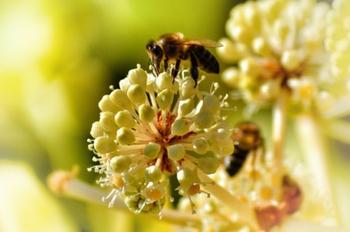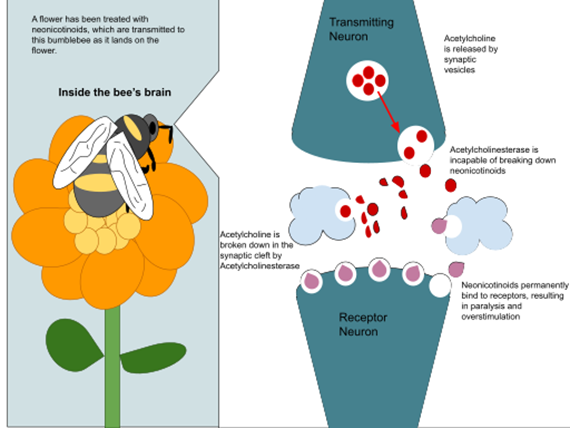Why you should nix the "neonics"
Neonicotinoids, often called “neonics,” are the most widely used class of insecticides in the world. These neurotoxins are used on food crops as well as ornamentals. Derived from nicotine and approved by the EPA in the 1990s, they were originally introduced as a less harmful pesticide to manage sap-sucking pests like aphids. Unfortunately, research shows that they are also toxic to honeybees, bumblebees, butterflies, and other pollinators. Neonics also harm beneficial insects and aquatic invertebrates like clams and worms. Insects exposed to neonics can become disoriented, have weakened immune systems, or die.
The neurotoxin that sticks around
Neonicotinoids are applied by drenching soil, spraying or injecting plants, or coating seeds. These pesticides are systemic, meaning they are absorbed and circulated throughout a plant. As a result, the pollen and nectar are toxic to any creature that feeds on treated plants. Unfortunately, the harmful chemical lasts a long time both on the plant and in the soil, and untreated plants can absorb the toxins from plants treated nearby. A study from UC Davis found that neonics negatively affect bee health and that this exposure can continue to affect future generations.
 Neonicotinoids are toxic to honeybees, bumblebees, butterflies, and other pollinators. Photo: pxhere
Effect on bees
Neonicotinoids are toxic to honeybees, bumblebees, butterflies, and other pollinators. Photo: pxhere
Effect on bees

Neonics are especially harmful to solitary bees, critical pollinators that comprise 90 percent of California’s native bees. A study from UC Riverside showed that neonics are harmful to solitary bees even when applied below the recommended application rate. Even low-level exposure can weaken a bee’s ability to detect odors or forage for food. Neonics have also been the cause of mass die-offs of native bumblebees. A study at Worcester Polytechnic Institute in Massachusetts showed that neonics affect queen and male bumblebees more than worker bees. This in turn hinders the ability to form new colonies.
Current status
Due to the proven harm that these chemicals cause, the US Fish and Wildlife Service phased out neonics on National Wildlife Refuges in 2016. The European Union banned all outdoor use of several neonics in 2018. The Environmental Protection Agency is currently reviewing neonicotinoids to determine if risk mitigation is in order. Learn more here.
How to avoid plants treated with neonicotinoids
- Read labels carefully. Look beyond the friendly name on the bottle. Acetamaprid, imidacloprid, dinotefuran, clothianidin, and thiamethoxam are all neonicotinoids.
- Support nurseries and retail outlets that have a "no neonicotinoid" policy.
- Buy from local growers, often at farmers' markets, who can attest that their plants are free of pesticides.
- Look for "neonic-free" plant tags.
- Buy organic
- Ask your local nursery staff to carry neonic-free plants and to voice your request to their corporate headquarters.
- Remove flowers. If you fear you may have purchased a treated plant, remove all flowers the first year after purchasing. This may seem unthinkable, but it can be an effective way to minimize impact on pollinators.
- Practice Integrated pest Management (IPM). Learn more.
- Plant a pollinator-friendly garden. Here’s how.

